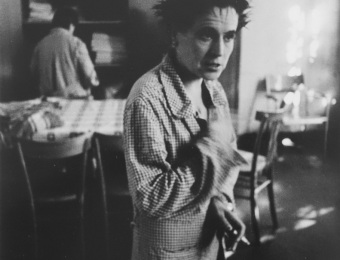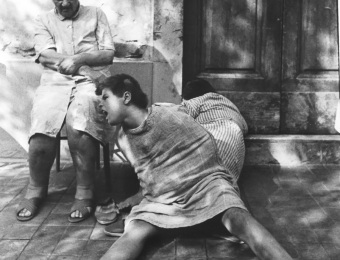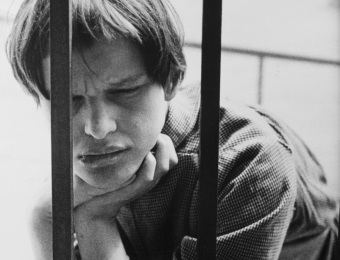Carla Cerati
In the late 1960s and early 1970s Carla Cerati tirelessly photographed with irony the rituals of the Milanese intellectual bourgeoisie – which she was part of – for the series Mondo Cocktail. In this image, two elegant women semi-reclining on a sofa celebrate the opening of designer Willy Rizzo’s furniture store.
In the late 1960s and early 1970s Carla Cerati tirelessly photographed with irony the rituals of the Milanese intellectual bourgeoisie – which she was part of – for the series Mondo Cocktail. In this image, a young Umberto Eco smiles at the photographer in the crowd at the inauguration of the M.A.R.C.O. international newsstand.
In the late 1960s and early 1970s Carla Cerati tirelessly photographed with irony the rituals of the Milanese intellectual bourgeoisie – which she was part of – for the series Mondo Cocktail. In this image, a young Inge Feltrinelli smiles at Vittorio Gregotti and Tomas Maldonado in the crowd at the inauguration of the M.A.R.C.O. international newsstand.
Patients in the asylums of Gorizia, Colorno, Florence and Ferrara were photographed by Carla Cerati at the request of Franco Basaglia to denounce the dramatic conditions in which the patients were held. Later, at the suggestion of Berengo Gardin, whom Cerati had invited to collaborate on the project, the work became the book Morire di Classe (Dying of Class) and contributed to the approval of Law 180 for the closure of asylums and the introduction of non repressive treatment methods for mental illnesses.
CARLA CERATI began working as a theatre stage photographer in the late 50s. From the 60s on she worked as a photojournalist and published Morire di Classe (1968), about the condition of Italian psychiatric hospitals, along with the photographer Gianni Berengo Gardin, and with the help of Franco Basaglia; she photographed the flooding in Florence in 1966, the changes in society and in the landscape from north to south in Maghi e streghe d’Abruzzo, Sicilia uno e due, Nove Paesaggi Italiani. With a critical and ironic eye, she photographed bourgeois society in Milan during the economic boom in Mondo Cocktail (1974). She was on the front line during the “years of lead” documenting clashes, feminist protests, massacres and trials. She conducted complex researches on colour, devoting herself to architectural photography and the female nude as in Forma di donna (1978). Towards the end of the 80s she gave up photojournalism to focus on writing. *She was born in Bergamo in 1926. She passed away in Milan on the 19 February 2016.







